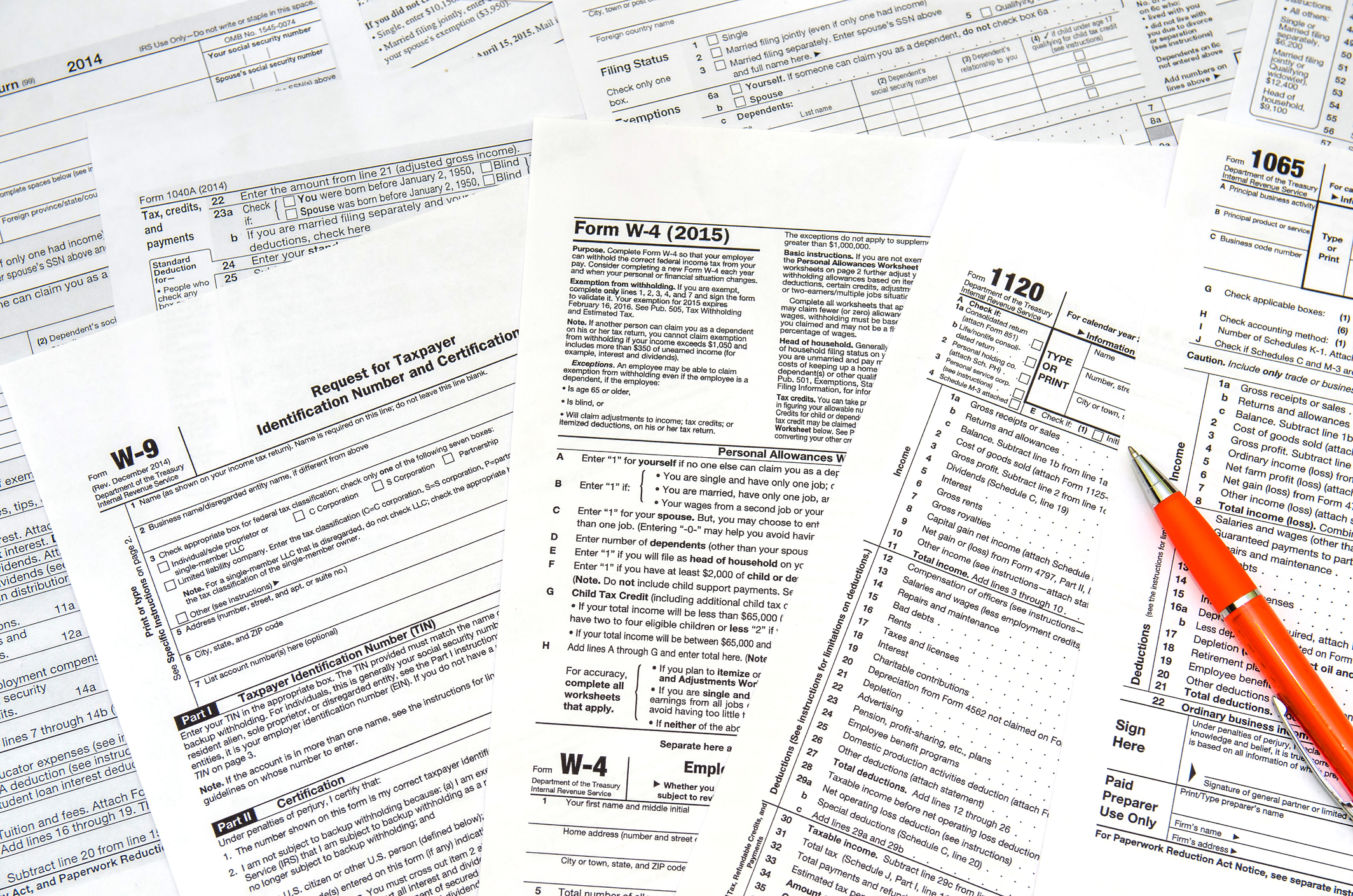5 Essential Tax Papers You Must File

Introduction to Filing Your Taxes

Filing taxes might seem like a daunting task, particularly with the volume of paperwork and the complexity of tax laws. However, understanding and filing the essential tax papers is crucial for adhering to legal obligations and possibly optimizing your tax returns. Here, we will explore the 5 Essential Tax Papers You Must File to keep your tax filings on track and potentially beneficial.
Form W-2: Wage and Tax Statement

The Form W-2 is perhaps the most recognized tax document for employees. This form is issued by your employer and details the income you’ve earned and the taxes withheld from your wages during the tax year.
What It Includes:
- Gross earnings
- Federal, state, and local taxes withheld
- Social Security and Medicare taxes
- Contributions to retirement plans like 401(k)
Why It’s Essential: The IRS uses this form to match your income and tax withholding with your tax return. Any discrepancies could lead to an audit or a delay in your refund.
🚨 Note: Ensure you receive your W-2 from your employer by the end of January. If you don't, follow up as soon as possible.
Form 1099: Independent Contractor and Other Miscellaneous Income

Unlike the W-2, Form 1099 comes in different versions to report various types of income for freelancers, self-employed individuals, and others:
Types of 1099 Forms:
- 1099-MISC: Miscellaneous income, such as rent, royalties, or non-employee compensation.
- 1099-INT: Interest income.
- 1099-DIV: Dividends and distributions from stocks or mutual funds.
- 1099-NEC: Non-employee compensation for freelancers, independent contractors, and gig workers.
Why It’s Essential: This form ensures you’re reporting all income sources accurately, preventing potential issues with tax compliance.
| 1099 Type | Purpose |
|---|---|
| 1099-MISC | For various types of payments like rent, royalties, etc. |
| 1099-INT | Interest payments |
| 1099-DIV | Dividend income |
| 1099-NEC | Non-employee compensation |

💡 Note: Even if you don't receive a 1099, you are still responsible for reporting all your income.
Form 1040: U.S. Individual Income Tax Return

Form 1040 is the primary form used to report individual income tax. Here’s what it covers:
Personal Information: Your name, address, social security number, etc.
Income: Summarizes income from all sources like W-2 and 1099s.
Deductions: Standard or itemized deductions.
Credits: Tax credits like the Earned Income Tax Credit (EITC).
Calculated Tax: Figures out the tax owed or the refund due.
Why It’s Essential: This form is the backbone of your tax return. All other tax documents flow into this, making it comprehensive and critical for filing.
Schedule C: Profit or Loss from Business

If you’re self-employed or have a business, Schedule C is where you’ll report:
Business Income: Gross receipts and sales.
Business Expenses: Costs of goods sold, car and truck expenses, and other operational expenses.
Why It’s Essential: Proper filling out of Schedule C can help reduce your taxable income by claiming legitimate business expenses.
📝 Note: Maintain thorough records of all business transactions as IRS audits on Schedule C filers are common.
Schedule A: Itemized Deductions

Schedule A allows you to itemize deductions instead of taking the standard deduction:
Mortgage Interest: Interest paid on your home mortgage.
Medical Expenses: Medical and dental expenses that exceed 7.5% of your adjusted gross income.
Charitable Contributions: Donations to qualified organizations.
Taxes Paid: State, local, and property taxes.
Why It’s Essential: Itemizing deductions can significantly reduce your tax liability if your allowable deductions exceed the standard amount.
Final Thoughts

Navigating through the maze of tax documents can be overwhelming, but understanding these essential forms can streamline the process and even lead to potential tax savings. Each document serves a specific purpose in reporting your income, expenses, and allowable deductions, ultimately ensuring you’re complying with the tax laws while potentially maximizing your refund.
Remember, the key to a hassle-free tax season is being organized, understanding your tax obligations, and ensuring all relevant documents are filed accurately and on time. Keeping these points in mind will help you through tax filing with confidence and possibly a few less headaches.
What if I miss a tax document?

+
If you miss a tax document, you can still file your taxes by estimating the missing income or expenses. However, you must file an amended return (Form 1040X) once you obtain the missing document.
Can I file taxes without a W-2 or 1099?

+
Yes, you can file your taxes without a W-2 or 1099. However, ensure you report all your income accurately. If you don’t have these documents, contact your employer or payee for copies. If they are unavailable, use pay stubs or bank statements to estimate.
How can I maximize my tax refund?

+
To maximize your tax refund, consider contributing to retirement accounts, making charitable contributions, claiming all available tax credits, and itemizing deductions if they exceed the standard deduction. Consulting with a tax professional can also provide personalized strategies.



